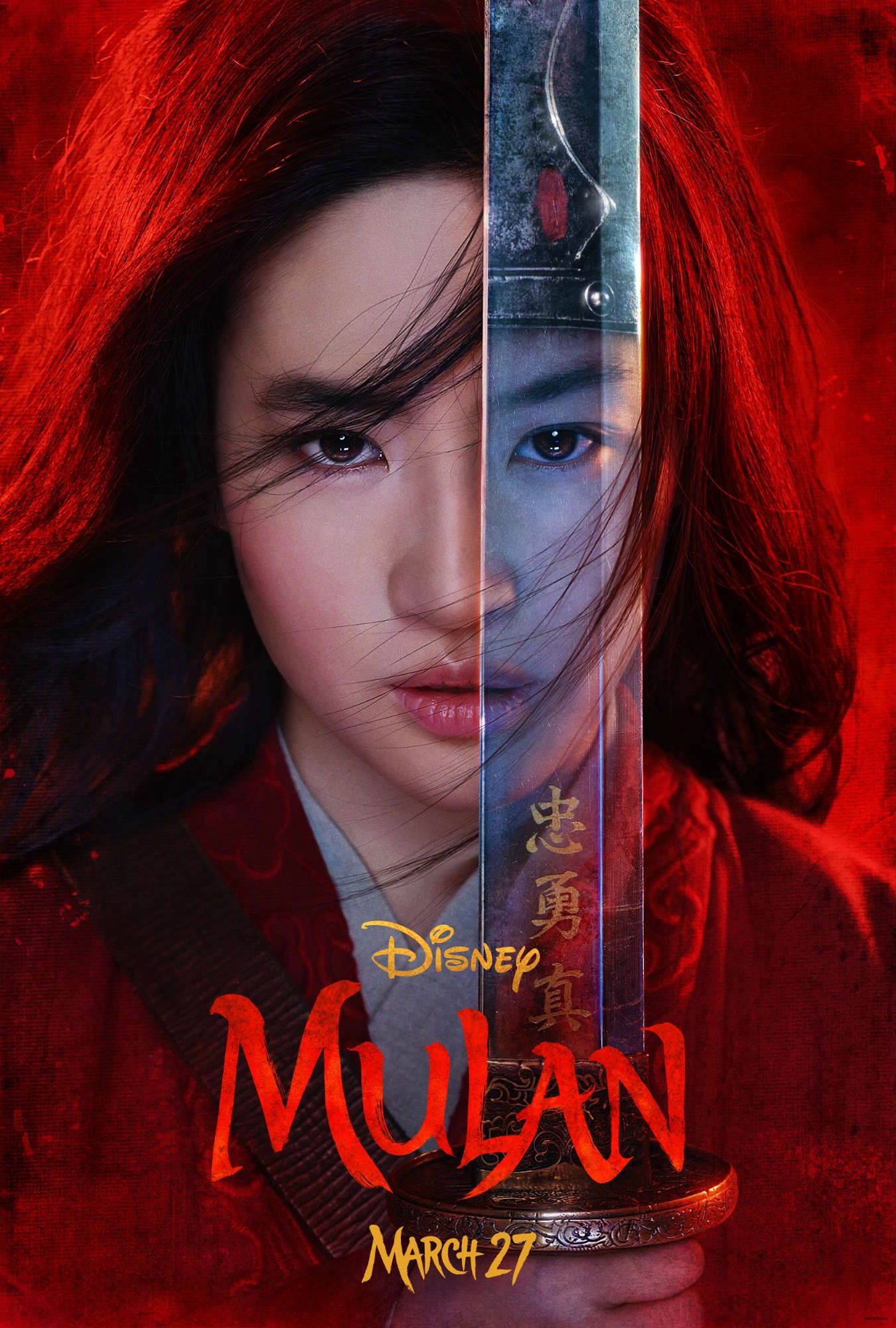The story of Mulan, a truly brave young woman who steps up to protect her family and country, has captured the hearts of many people around the globe for a very long time. It's a tale of honor, courage, and finding one's own strength, even when things look incredibly tough. This powerful narrative has been brought to life in different ways by Disney, giving us both a beloved animated film and a more recent live-action version. The decisions made about who would play these important characters, from the lead role herself to the memorable supporting figures, are, you know, a huge part of why these movies resonate with us.
When thinking about how these stories get told on screen, the selection of the people who will bring the characters to life is, in a way, everything. It’s about finding individuals who can truly embody the spirit of Mulan, her family, and her fellow soldiers. Each version, the animated one from 1998 and the live-action movie from 2020, had its own unique approach to picking the right actors, which then shaped how the story felt to the audience. It’s almost like choosing the right ingredients for a special dish; every choice contributes to the final taste.
So, we're going to take a closer look at the choices made for these productions, exploring the talented people who lent their voices and their presence to these iconic roles. We'll consider what made their contributions so special and how their performances helped make Mulan's journey so memorable for those watching. It's really quite interesting to see how different talents come together to tell one incredible story, isn't it?
Table of Contents
- Who Stepped Into Mulan's Shoes?
- How Did the Animated Casting Mulan Shape the Story?
- What Makes the Casting Mulan So Important?
- How Does Casting Mulan Differ Across Versions?
Who Stepped Into Mulan's Shoes?
When Disney decided to create a live-action film about Mulan, the search for the main actor was, you know, a pretty big deal. This person would need to carry the entire film, portraying Mulan's transformation from a young woman in a village to a formidable warrior. It wasn't just about finding someone who looked the part; it was about finding someone who could truly embody the character's spirit, her inner strength, and her dedication to her family. The choice for this incredibly significant role fell upon an actor whose work has gained a lot of attention, especially in recent years.
The 2020 live-action movie, which premiered on Disney+ in September of that year, cast a performer who had to meet a lot of expectations. This actor would be bringing a beloved animated character to life in a completely new way, for a whole new generation, and that's quite a task. The person chosen had to be believable as both the quiet daughter and the brave soldier, which, you know, requires a lot of range in terms of acting ability. This selection was a central piece of the puzzle for the entire production, setting the tone for the whole film, so it had to be just right.
The Person Behind the Live-Action Casting Mulan
The individual who took on the lead role in the 2020 live-action Mulan film was Yifei Liu. She is, in some respects, a very well-known figure in the entertainment world, particularly in Chinese cinema. Her presence in the film was absolutely central to its portrayal of the story. She had to convey the character's resolve and quiet determination without the aid of songs or animal sidekicks, which were such a big part of the earlier animated version. This meant her acting had to speak volumes, literally, and she really had to connect with the audience through her expressions and actions. The director, Niki Caro, clearly had a vision for this take on the story, and Yifei Liu was a key part of making that vision a reality for the live-action casting Mulan.
A Look at Yifei Liu's Background
Yifei Liu, the actor chosen for the lead in the 2020 live-action Mulan, has quite an interesting history in entertainment. Her career began around 2012, and since then, she has, more or less, put together a really impressive collection of acting credits. She has been in various films and television shows, showcasing her talent in different kinds of roles. This background likely helped her prepare for the demanding physical and emotional requirements of playing Mulan, a character who undergoes such a significant transformation. Her experience in martial arts, for example, was certainly an advantage for the action sequences in the movie, making her a very suitable choice for the role.
| Detail | Information |
|---|---|
| Full Name | Liu Yifei |
| Also Known As | Crystal Liu |
| Nationality | Chinese-American |
| Occupation | Actor, Singer, Model |
| Active Years | 2003-present (acting career began around 2012 as per text) |
| Notable Role | Mulan (2020 live-action film) |
How Did the Animated Casting Mulan Shape the Story?
The 1998 animated Mulan film was, you know, a really big deal for Disney. It was their 36th animated feature and, in a way, a musical adventure that captivated audiences with its songs and vibrant characters. The casting for this movie was different from a live-action film because it involved voice actors. These individuals had to bring personality, emotion, and song to their roles using only their voices. It's a completely different skill set than acting in front of a camera, but no less important for telling the story. The choices for the voices, particularly for Mulan herself and her companions, really defined the feel of the film, didn't they?
The success of the animated film, produced by Walt Disney Feature Animation, hinged on how well these voice performers could make their characters feel real and relatable, even without being seen on screen. They had to convey humor, sadness, bravery, and determination through vocal inflections and singing. This approach to casting allowed for a lot of creative freedom in terms of character design and movement, knowing that the voices would provide the emotional depth. It was, arguably, a classic example of how voice talent can truly make an animated story soar, especially with the original casting Mulan.
The Voices That Defined an Era of Casting Mulan
For the 1998 animated Mulan, the English voice cast featured some truly memorable performances. The character of Mulan herself had two voices: one for her speaking lines and another for her powerful singing parts. This dual approach is, actually, quite common in animated musicals. For the speaking role of Captain Li Shang, the courageous leader, BD Wong lent his voice, giving the character a strong and honorable presence. Then there was Mushu, the small but very spirited dragon, voiced by the incomparable Eddie Murphy. His performance, in some respects, brought a lot of comedic relief and personality to the film, making Mushu a fan favorite. Other voice talents included Miguel Ferrer, Harvey Fierstein, Freda Foh Shen, and June Foray, all contributing to the rich sound of the film. These choices for the casting Mulan, especially for the voice roles, really helped establish the film's enduring popularity and charm, didn't they?
It’s also worth noting that the film had different language versions, like the Latin American Spanish dub, where characters like Mulan were voiced by Maggie Vera, and Shang's singing was done by Cristián Castro, with Eugenio Derbez as Mushu. This just goes to show how much thought goes into selecting the right vocal talent to resonate with different audiences, ensuring the story's emotional impact carries across cultures. The directors, Tony Bancroft and Barry Cook, along with producer Pam Coats and executive producer John Lasseter, clearly understood the importance of getting these vocal performances just right for the overall feel of the animated casting Mulan.
What Makes the Casting Mulan So Important?
The significance of choosing the right actors for Mulan goes beyond just filling roles; it's about honoring a story that means a lot to many people. The tale of Hua Mulan, a young woman who takes her ailing father's place in the imperial Chinese army to defend the country from invaders, is, you know, a deeply rooted part of folklore. So, when bringing such a figure to the screen, whether through animation or live action, the performers chosen need to convey her courage, her sacrifice, and her ultimate heroism in a way that feels genuine. It's not just about acting; it's about embodying a symbol of strength and selflessness. This is why the decisions around casting Mulan are so incredibly important to the success and reception of the films.
A good cast can make a story come alive, drawing viewers into the world of the film and making them feel connected to the characters' struggles and triumphs. If the actors don't quite fit, or if their performances don't quite hit the mark, it can, in a way, lessen the impact of the entire production. For a story as iconic as Mulan, which has such a strong message about duty, family, and personal bravery, the performers really need to be able to carry that weight. They become the faces and voices that audiences associate with this legendary figure, and that's a pretty big responsibility, wouldn't you say?
The Impact of Key Supporting Roles in Casting Mulan
While the main character, Mulan, is undoubtedly central, the supporting roles also play a very big part in shaping the story and its emotional resonance. In the 2020 live-action film, for example, the roles of Mulan's parents were filled by accomplished actors Tzi Ma and Rosalind Chao. Their performances as the honored warrior father and the caring mother were, arguably, crucial in showing the family dynamic that motivates Mulan's actions. It's their love and concern that prompt her to secretly enlist in the army in her father's stead, a truly pivotal moment. So, the strength of these performances really helps to establish the emotional foundation of the story, making Mulan's sacrifice feel even more profound.
Similarly, other important characters in the 2020 film, like those played by Donnie Yen, Jason Scott Lee, and Gong Li, also contribute significantly to the narrative. Donnie Yen, for instance, brings his considerable presence to his role, adding another layer of gravitas to the military setting. Gong Li, too, delivers a powerful performance that introduces a new element to the story, showcasing her range as an actor. These actors, through their performances, help to build the world around Mulan, providing the challenges, support, and opposition that shape her journey. The collective strength of the entire ensemble, you know, really elevates the film, making the overall casting Mulan a very thoughtful process.
How Does Casting Mulan Differ Across Versions?
It's really interesting to see how the approach to casting changes when you move from an animated film to a live-action one, especially with a story like Mulan. The 1998 animated version, being a musical, relied heavily on voice actors who could not only deliver lines with feeling but also sing. This meant that the vocal quality and singing ability were, in some respects, just as important as the acting itself. The characters could be designed with exaggerated features or fantastical elements, and the voice actors would bring them to life with personality. Think about Eddie Murphy's Mushu; his voice work created a truly unique and beloved character that wouldn't necessarily translate directly to a live-action performance, would it?
On the other hand, the 2020 live-action film, while still drawing inspiration from the animated movie, was presented as an action and drama film. This meant the actors needed to be physically capable of performing stunts and fight sequences, in addition to conveying emotions through their facial expressions and body language. The casting choices for the live-action version had to consider these physical demands, as well as the need for a more realistic portrayal of the characters. It's a completely different set of requirements, isn't it, when you're looking for someone to actually *be* Mulan on screen, rather than just voice her?
The Shift from Voice to Visual in Casting Mulan
The shift from voice acting to live-action acting for Mulan meant that the casting directors were looking for different qualities in their performers. For the animated film, the voice actors like Maggie Vera (for the Latin American Spanish dub) or the English voice cast had to create a character solely through sound. Their ability to convey emotion, humor, and determination through vocal inflections was, you know, absolutely key. The visual aspect was handled by the animators, who drew the characters' movements and expressions to match the voices. This separation allowed for a lot of creative freedom, as the voice didn't have to perfectly match a real-world physical appearance, did it?
However, for the 2020 live-action production, directed by Niki Caro, the actors needed to be visually convincing as their characters. Yifei Liu, for instance, had to embody Mulan's physical strength and grace, performing many of her own stunts. The film aimed for a more grounded, realistic feel, which meant the actors' physical presence and ability to convey emotion through their entire body were paramount. This change in focus, from primarily vocal performance to a full-body portrayal, really highlights the distinct challenges and considerations that go into the casting Mulan for different kinds of films. It's almost like they were looking for a different kind of magic to bring the story to life, don't you think?


